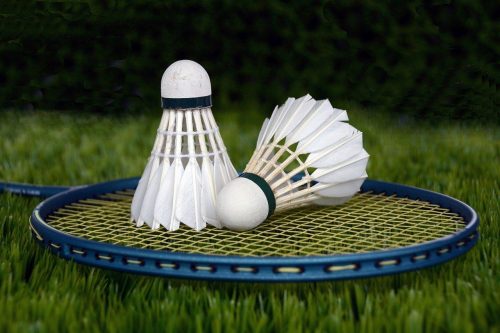 Badminton is a fast-paced and engaging racquet sport that can be played both recreationally and competitively. Originating in the mid-19th century, it has gained immense popularity worldwide due to its accessibility and the excitement it offers. Played on a rectangular court divided by a high net, badminton can be enjoyed in singles (one player per side) or doubles (two players per side) formats. The objective of the game is to score points by hitting a shuttlecock over the net and landing it in the opponent's court.
Badminton is a fast-paced and engaging racquet sport that can be played both recreationally and competitively. Originating in the mid-19th century, it has gained immense popularity worldwide due to its accessibility and the excitement it offers. Played on a rectangular court divided by a high net, badminton can be enjoyed in singles (one player per side) or doubles (two players per side) formats. The objective of the game is to score points by hitting a shuttlecock over the net and landing it in the opponent's court.
The sport requires a combination of skill, strategy, and physical fitness, making it a fantastic way to stay active while having fun. With its unique techniques, such as powerful smashes, delicate drop shots, and strategic clears, badminton challenges players to develop their hand-eye coordination, agility, and reflexes. Whether you're a beginner looking to learn the basics or an experienced player aiming to refine your skills, understanding the fundamentals of badminton is essential for enjoying this exhilarating game.
1. Understand the Basics
- Objective: The main goal of badminton is to score points by hitting the shuttlecock (birdie) over the net and landing it in the opponent's court.
- Players: Badminton can be played in singles (one player per side) or doubles (two players per side).
2. Equipment Needed
- Racket: Choose a lightweight badminton racket.
- Shuttlecock: Use feather or synthetic shuttlecocks for play.
- Net: The badminton net should be set at a height of 5 feet in the center and 5 feet 1 inch at the ends.
- Court: A standard badminton court is 20 feet wide for doubles and 17 feet wide for singles.
3. Learn the Rules
- Scoring System: Badminton uses a rally scoring system. A match is typically played to 21 points, and a player must win by at least 2 points.
- Service Rules: Players take turns serving. The serve must be hit below the waist and diagonally to the opposite service court.
- Faults: Common faults include hitting the shuttlecock out of bounds, failing to clear the net, or serving incorrectly.
4. Gripping the Racket
- Forehand Grip: Hold the racket with your dominant hand, placing the base knuckle of your index finger on the second bevel of the racket handle.
- Backhand Grip: Rotate your hand so the thumb is placed on the back of the handle, providing extra leverage for backhand shots.
5. Basic Techniques
- Serving: Stand behind the service line, hold the shuttlecock with your non-dominant hand, and hit it with the racket while swinging from low to high.
- Clear Shot: Aim to hit the shuttlecock high and deep into your opponent's court. Use an overhead motion for this shot.
- Drop Shot: Gently tap the shuttlecock so it falls just over the net into your opponent's court.
- Smash: A powerful downward shot hit from above shoulder height, aimed to win points.
- Net Shot: A shot played close to the net, either a drop shot or a quick flick to catch the opponent off guard.
6. Positioning and Movement
- Footwork: Practice quick and agile footwork to move efficiently around the court. Position yourself correctly to hit the shuttlecock.
- Ready Position: Stand with your feet shoulder-width apart, knees slightly bent, and racket in front of you, ready to react.
7. Play the Game
- Start the Match: The player serving will start the game, and players will take turns serving and receiving.
- Keep Score: Track points carefully. When a player reaches 21 points, they win the game, but they must win by 2 points.
- Change Ends: Players switch sides of the court after the first game and after one player reaches 11 points in the deciding game.
8. Practice Regularly
- Drills: Engage in drills to improve your serving, footwork, and shot accuracy.
- Play Matches: Regularly play with different opponents to enhance your skills and strategies.
9. Stay Fit
- Warm-Up: Always start with a warm-up to prevent injuries.
- Conditioning: Focus on fitness and agility training to enhance your performance on the court.
Conclusion
Playing badminton is not only enjoyable but also a great way to improve your fitness and coordination. By mastering the basic rules, techniques, and strategies, you can become a better player and enjoy the game even more. Whether you're playing for fun or competition, practice will help you refine your skills and enjoy the game.










